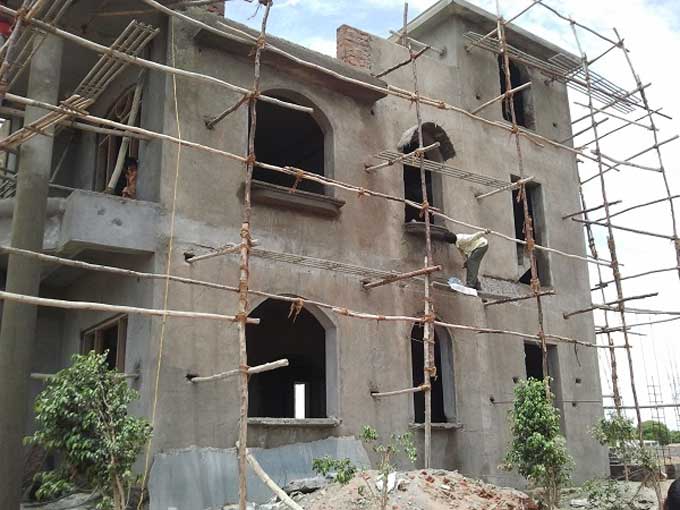
Structure Design of RCC Building

Plan, Design, and Construction are the three stages of structural design for a building project. As part of the planning process, the structural dimensions and layout will consider. Making a decision depends on the function of the building. It also takes into account aesthetics, sociology, the economy, and the environment.
Structural Design 101
It depends on the kind of structure is designed to determine the basis for structural design. You need the following information To create a structural design. Aside from the major information mentioned above, additional information regarding the type of building, its environmental exposures, and its zones earthquake or wind zones are needed.
Workflow of Structural Design
Condition of the Site
The designer will determine the following by studying the site conditions:
A. A soil's ability to bear weight.
B. The soil's maximum bearing capacity.
C. Choosing the soil's foundation.
D. If any soil improvement requires.
E. The level of the water table at the site.
Structure Load
Various types of loads will apply to the structure. You will find descriptions of the different types of loads to consider when designing structures below.
Live Load
During an occupancy period, a structure is subject to impose loads called "live loads." It is common for these loads to present or absent during use. People, maintenance tools, and other live loads are common in industrial buildings and structures. A structure's live load varies with its structure.
Dead Load
Dead load is the load caused by the structural elements' weight. Other than the structural members such as columns and beams, resulting loads come from the plastering, finishing, the walls, the slabs, etc. Dead loads include elements that permanently mount on a stationary structure. If any member has a volume and a self-weight, you can calculate its dead load.
Wind Load
A building's windward side horizontally affects by wind loads. There is a wind zone for every site or region under consideration. An analysis of the area can make by calculating the maximum wind speed based on the wind zone. All these data will be available from the wind map of the location.
The building's surface area and orientation take into consideration to convert the wind speed into force. According to the direction of the wind, you can calculate wind force. A building's shape or structural members do not consider when determining wind loads. In wind load calculations, only structures subjected or designed to resist wind include.
Key Factors of Structural Design
The following factors should guide the design of buildings and other structures:
1. A foundation or structure may settle up to a certain amount.
2. Structural members and buildings as a whole can experience vertical and lateral deflections.
3. Buildings and structures should design to prevent sliding and overturning.
4. The drawing should follow standard detailing guidelines.
5. The Project Design Basis, local bylaws, and rules as well as applicable codes of conduct must adhere to in all engineering and design processes.
6. Structural members should design according to environmental exposure conditions, and the appropriate factors should be applied.
7. A design should consider the types of construction materials and structural members that will use.
8. When an emergency occurs such as a fire, you must make sure that occupants have an easy way out.
Wrapping it Up
The factors above are just a few of the factors that should consider in the structural design. When you are building and designing other structures, it is a good idea to adhere to a checklist to prevent errors.
To learn more, watch the following video tutorial.
Video Source: Civil Engineers
As part of the engineering phase of a building, every structural member carefully designs. All structural members are specified here in terms of their dimensions, proportions, and details of their connections.
Constructing Structures will include the procurement and installation of materials, the transport of labor, and the erecting process. There will be problems with the work that requires it to redesign.


